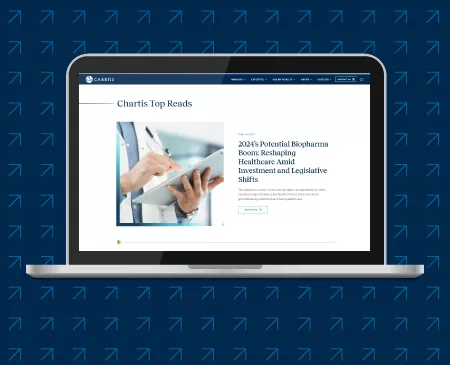What’s trending: Despite last year’s controversy around ranking systems generally, leading provider organizations leverage external reports to advance quality and safety performance
As Leapfrog releases its latest quality ratings of hospitals and health systems, fall-out over related ratings and rankings in recent years—such as the U.S. News and World Report’s “Best Medical School” rankings—has left some providers wondering about the value of reports like these. But quality experts and leading healthcare organizations have noted that while ratings and rankings by reputable organizations aren’t perfect, external benchmarks like these are important tools for improving healthcare quality.
“If you think about a Venn diagram between healthcare ratings and rankings and actual quality, we’ll all agree they don’t overlap 100%,” Andrew Resnick, MD, said during a panel discussion with patient safety leaders who reflected on their work at the Cleveland Clinic and Froedtert Hospital in Milwaukee. Yet that intersection is an essential focus for making meaningful strides in quality improvement.
Citing the management maxim that you can’t improve what you can’t measure, these leaders pointed to the value of an external data source that’s married to internal measures and efforts.
Cleveland Clinic places its mission as a leader in safety, quality, and experience at the heart of its efforts. And its leaders find ratings and rankings data an essential piece to “objectively compare ourselves to others,” said Steve Mrozowski, who previously served as Senior Director of Patient Safety and High Reliability at Cleveland Clinic.
Why it matters
The timing couldn’t be more important for ramping up efforts to improve quality and safety. Reported sentinel events have skyrocketed in recent years, with 2022 seeing a 78% increase over 2020, according to data from The Joint Commission.
That raises the question of where to start. Do efforts to improve ratings and rankings lead to actual clinical outcomes improvement? Or does improving quality, safety, and reliability lead to improved ratings and rankings?
It’s a bit of a chicken-and-egg scenario, said Dr. Resnick, Chief Medical and Quality Officer at Chartis. “We believe the answer to both is yes—if done correctly.”
But for leaders who want to improve their organizations’ quality and safety performance, it can be a challenging time to undertake an additional effort. Major financial constraints and a workforce suffering from high rates of burnout, disengagement, and turnover have left many leaders thinking they simply can’t add another improvement initiative to their organizations’ plates right now.
That’s why an organization’s approach to improving quality performance is the key.
Quality and safety improvement “can’t be ‘one more thing’” for your organization, said Michael Stadler, MD, Chief Medical Officer at Froedtert Hospital and Associate Dean for Clinical Affairs at Medical College of Wisconsin. “It needs to be the way you do things.”
Organizations need to focus on building resilience to counteract the system-level and people-level errors that happen every day. The way to do that is to take a holistic approach—to become a highly reliable organization.
Achieving high reliability should address not only quality and safety concerns but also help improve organizations’ many other pressing concerns. That includes the costs of care; inefficiencies; patient experience; liability exposure and expense; performance on regulatory surveys; reputation, ratings, and rankings; and staff engagement, retention, and wellbeing.
In addition to improving outcomes for all patients, high reliability delivers a lower per-unit cost of care, Dr. Resnick said. “High reliability is the way to address all these things in a much more effective and efficient manner.”
What’s next
As providers aim to become highly reliable organizations, experts point to several elements that are essential for success:
Get your people onboard. Depending on the organization, leaders may need to first gain buy-in from their board, or they may have board-level support but need to fully engage the front line. Regardless, the main objective is to engage the entire organization—from top to bottom.
“The people on the ground know what the problems are and how to solve them,” Mrozowski said. He noted that often-overlooked staff can make valuable contributions when engaged—down to administrative support and food service workers. “You need to bring all those folks together to give this work more traction.”
Understand your methodology and make it your North Star. Ratings and rankings can help support organizational goals and provide external benchmarks to work toward. But leaders must recognize both their limitations and desired uses.
Dr. Stadler noted that Froedtert was very deliberate in choosing a specific ratings and rankings system as their “True North,” based on the “sheer volume and objective nature of its measures.” He advises leaders to understand the methodologies they leverage and why they are prioritizing them over other methodologies. This includes distilling down representative measures to tell the story about the organization’s commitment to quality and safety.
Empower and align your people. The real key is to align the organization and make it accountable from the very top down to the front line and back up again to the board. The entire organization needs to know what the priorities are and be equipped to drive performance forward.
Organizations need to have a clear and obvious cascade of accountability and visibility into goals, Mrozowski said. Cleveland Clinic produces a “top 12” calendar of safety and quality concerns each year, many of which are reflected in its rankings and organizational goals. Leadership rounding each month focuses on this calendar, so everyone around the 19-hospital enterprise is discussing these same topics.
Dr. Stadler highlighted the importance of structures and systems that allow ongoing execution. At Froedtert, unit-based local teams participate in metric selection. These units have access to their performance data, and they know that when they prevent the next adverse event, their own scorecards will reflect that.
Communicate, measure, and close the loop. The best system is bidirectional, putting people in the right position of authority and accountability and fostering innovation. That includes clearly messaging how strategic and annual plans apply to quality and safety, elevating problems and innovations identified at the front line, confirming actions taken, and measuring results.
“You should be getting the appropriate information you need from the boots on the ground all the way up to the senior executives,” Dr. Stadler said. “No one is going to raise their hand with the next idea or problem if you’re not closing the loop, addressing it, sharing how you’re addressing it, and then sharing the results.”
The importance of improving safety and quality is no secret. Similarly, “most of the best practices for performance improvement are well known and ‘googleable,’” Dr. Resnick noted. The secret sauce lies in how organizations pursue these changes and engage their people to change their behavior and execute on this vision in a sustainable manner.
And the necessary timing for making these changes? That’s no secret, either: It’s right now.



